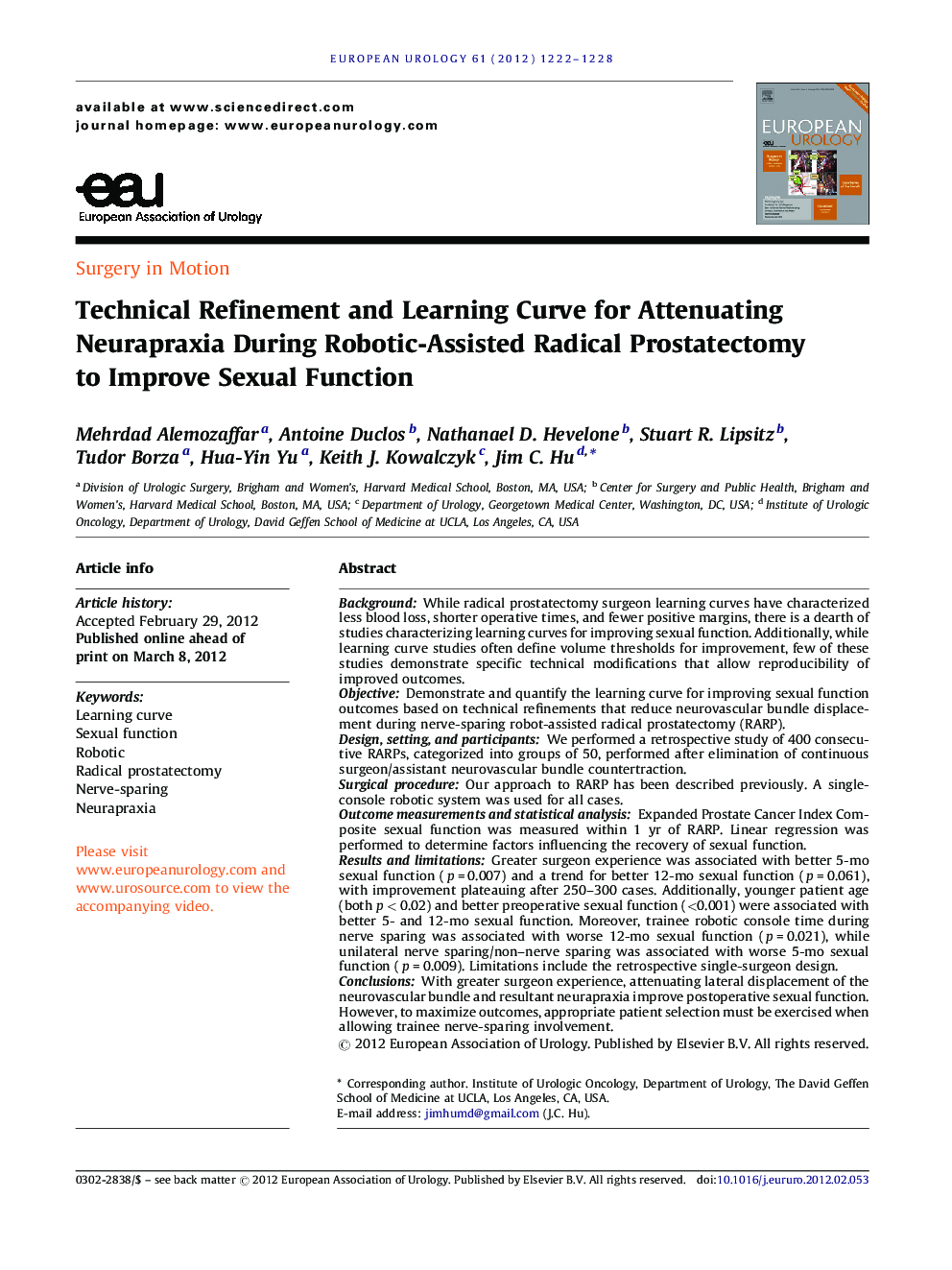| کد مقاله | کد نشریه | سال انتشار | مقاله انگلیسی | نسخه تمام متن |
|---|---|---|---|---|
| 3924119 | 1253092 | 2012 | 7 صفحه PDF | دانلود رایگان |

BackgroundWhile radical prostatectomy surgeon learning curves have characterized less blood loss, shorter operative times, and fewer positive margins, there is a dearth of studies characterizing learning curves for improving sexual function. Additionally, while learning curve studies often define volume thresholds for improvement, few of these studies demonstrate specific technical modifications that allow reproducibility of improved outcomes.ObjectiveDemonstrate and quantify the learning curve for improving sexual function outcomes based on technical refinements that reduce neurovascular bundle displacement during nerve-sparing robot-assisted radical prostatectomy (RARP).Design, setting, and participantsWe performed a retrospective study of 400 consecutive RARPs, categorized into groups of 50, performed after elimination of continuous surgeon/assistant neurovascular bundle countertraction.Surgical procedureOur approach to RARP has been described previously. A single-console robotic system was used for all cases.Outcome measurements and statistical analysisExpanded Prostate Cancer Index Composite sexual function was measured within 1 yr of RARP. Linear regression was performed to determine factors influencing the recovery of sexual function.Results and limitationsGreater surgeon experience was associated with better 5-mo sexual function (p = 0.007) and a trend for better 12-mo sexual function (p = 0.061), with improvement plateauing after 250–300 cases. Additionally, younger patient age (both p < 0.02) and better preoperative sexual function (<0.001) were associated with better 5- and 12-mo sexual function. Moreover, trainee robotic console time during nerve sparing was associated with worse 12-mo sexual function (p = 0.021), while unilateral nerve sparing/non–nerve sparing was associated with worse 5-mo sexual function (p = 0.009). Limitations include the retrospective single-surgeon design.ConclusionsWith greater surgeon experience, attenuating lateral displacement of the neurovascular bundle and resultant neurapraxia improve postoperative sexual function. However, to maximize outcomes, appropriate patient selection must be exercised when allowing trainee nerve-sparing involvement.
Journal: European Urology - Volume 61, Issue 6, June 2012, Pages 1222–1228